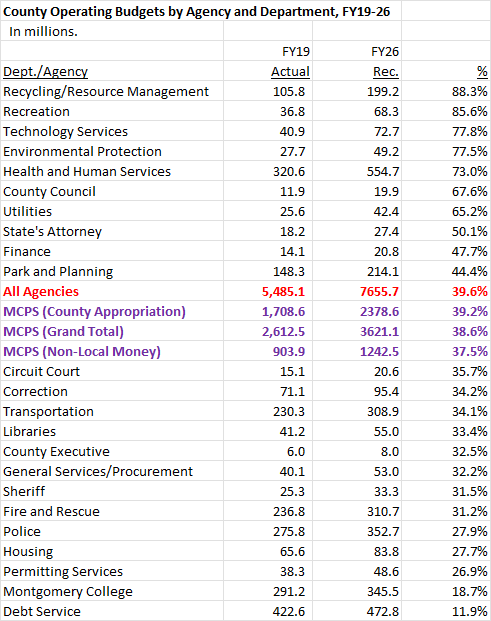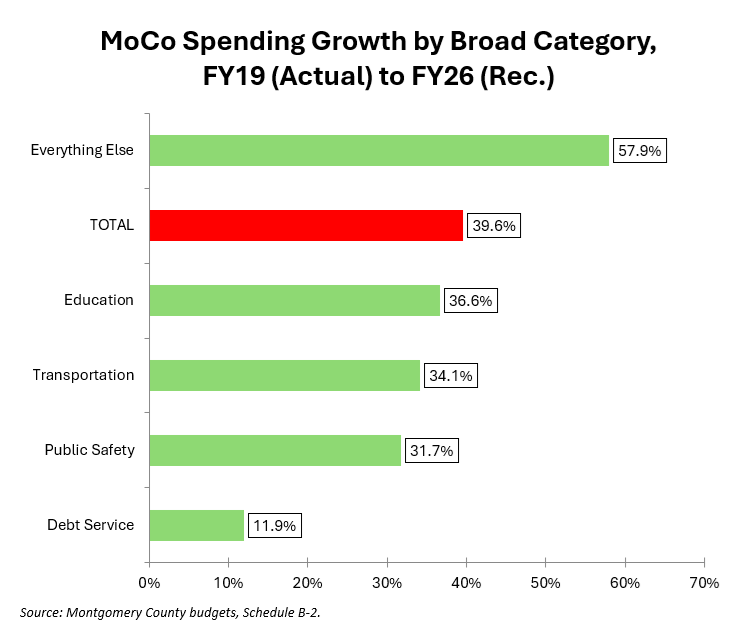By Adam Pagnucco.
In Part One, we looked at the one-year increase for the county’s major departments and agencies in County Executive Marc Elrich’s FY26 recommended operating budget. Now let’s look at those increases between FY19 and FY26.
Why are we picking FY19? First, base year is a critical standard of comparison to current year because changes in base year can dramatically affect percentage changes. That’s why in much of my economic and budget work (like my recent series on the county’s economy), I use multiple base years. Second, FY19 was the last budget passed under County Executive Ike Leggett and a council that had many term-limited members. Subject to what is decided this year, the period of FY19-26 is the budget record of County Executive Marc Elrich and Council Members Gabe Albornoz, Andrew Friedson, Evan Glass, Will Jawando and (partially) Sidney Katz. None of them ever voted against a budget. They co-own this record.
Let’s start with the increases by major department and agency over the seven-year period.

Three of the top four functions – recycling and resource management, recreation and environmental protection – are funded at least partially by fees. These fees are outside the county’s charter limit on property taxes and therefore can be raised whenever deemed necessary. That demonstrates the impact of charter limits on taxes.
Another fact is that MCPS’s budget increases have roughly tracked budget increases overall. That’s largely due to the last couple years, which have been the best for MCPS in decades. The school system’s funding took heavy hits during the Great Recession but that was some time ago.
Now let’s summarize the above in five broad categories. Education is MCPS and Montgomery College. Transportation is the county’s parking districts, Ride On and the transportation department’s operating budget. Public safety is animal services, consumer protection, correction, emergency management, fire and rescue, police, sheriff and state’s attorney. Debt service is used to pay off the county’s bonds, which are used for the capital budget. And everything else is, well… everything else. The table below shows growth in those categories.

Education, transportation and public safety grew by similar rates but everything else is a clear winner. This is a sign of the county government’s expansion into areas beyond the basics. Montgomery County government has more functions than any other county government in Maryland, and perhaps more than any in the region except D.C. (which is akin to a state government). That’s because county politicians want it that way.
Next: the long term.
